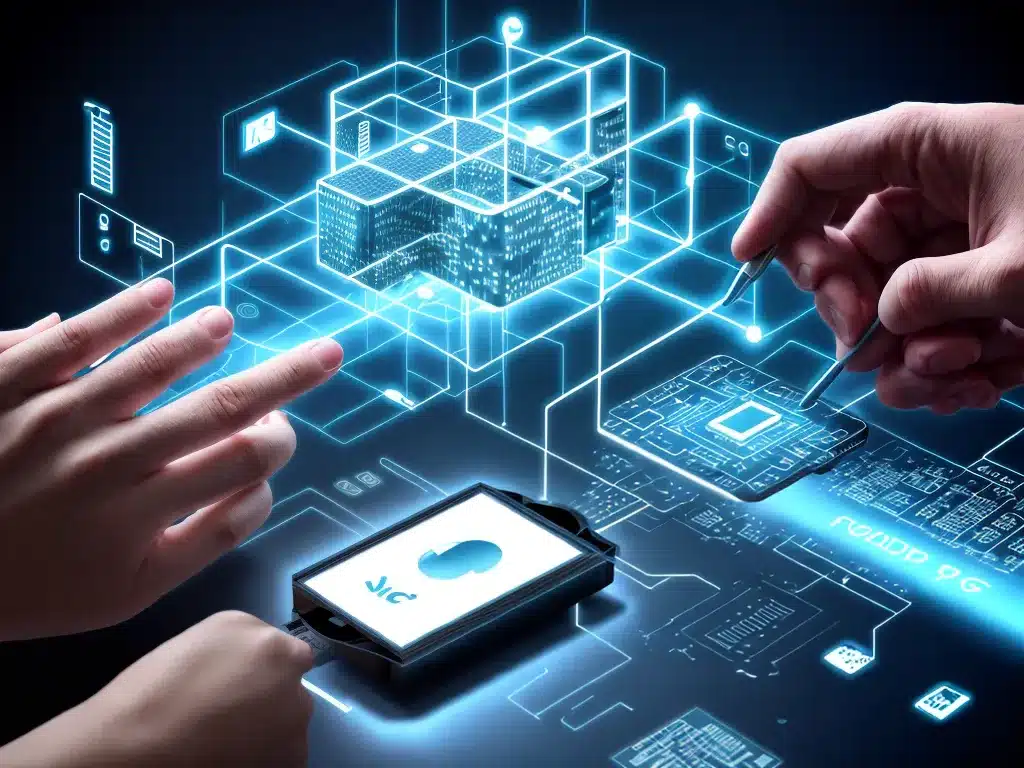
IoT Edge Computing: Processing Data Locally
EDGE computing is an exciting new paradigm in the Internet of Things (IoT) landscape. By processing data locally on edge devices, instead of sending it to the cloud, edge computing is enabling real-time insights and actions. As an IoT professional, I am fascinated by the possibilities edge computing unlocks. In this article, I will provide an in-depth look at what edge computing is, its benefits, use cases, challenges, and the future outlook for this rapidly evolving technology.
What is Edge Computing?
Edge computing refers to processing data locally on edge devices, rather than sending it to the cloud or a data center. The “edge” can include devices like gateways, routers, switches, machines, and more.
Instead of relying solely on the cloud, computation and analysis occur on local edge devices. This enables real-time actions and insights, reduced costs, and other benefits. Key abilities of edge devices include:
- Collecting and analyzing data locally
- Responding with real-time actions without latency
- Processing data even with intermittent connectivity
Edge computing complements cloud computing. It does not replace the cloud but rather brings computation and intelligence closer to the source of data.
Benefits of Edge Computing
There are several key benefits driving adoption of edge computing:
Real-Time Actions and Insights
By analyzing data locally, edge devices can respond immediately with real-time actions. Latency is reduced since data does not need to make the round trip to the cloud. This enables time-sensitive capabilities like closed loop control, anomaly detection, and more.
Reduced Bandwidth Costs
Less data transmission to the cloud means lower network bandwidth requirements. This reduces connectivity costs, especially for remote IoT deployments with thousands of sensors or devices.
Improved Security
With less data sent to the cloud, there are fewer security risks associated with data transmission and remote storage. Sensitive data can be analyzed locally and only aggregated results sent to the cloud.
Operational Resiliency
Edge computing allows IoT systems to function even with intermittent connectivity. Critical analytics can occur locally when connectivity is lost. Data is buffered until connectivity returns.
Low-Power for Remote Devices
Small IoT sensors rely on battery or solar power. By analyzing data locally, transmission costs are reduced, extending battery life. This enables wider IoT sensor deployments.
Edge Computing Use Cases
Edge computing is enabling IoT solutions across many industries:
Manufacturing
In factories, edge computing allows real-time quality checks during production. Issues can be identified instantly before more products are impacted. Machine failures can also be predicted based on vibration sensor data.
Energy
For oil rigs and wind farms, edge computing enables remote monitoring and control. With improved connectivity costs, more sensor data can be collected to optimize operations.
Smart Cities
In public infrastructure, edge devices can detect anomalies in real time, like pipe leaks or road issues. Rapid response reduces costs and impact. Traffic optimization is also improved.
Healthcare
Wearables with edge capabilities can monitor patients in real time and flag issues instantly, without needing to transmit all data to the cloud first.
Retail
In stores, edge computing allows real-time analysis of customer behavior to improve engagements and promotions. Cashier-less stores are enabled via edge capabilities.
Autonomous Vehicles
Self-driving vehicles require instant analysis of sensor data to respond to changing road conditions. Edge computing in the vehicle processes this data to make decisions.
Challenges with Edge Computing
While promising, there are barriers to overcome with edge computing:
-
Management complexity – Managing widely distributed edge devices is difficult compared to centralized cloud servers.
-
Security risks – Edge devices increase the attack surface. Devices must be secured, especially when operating autonomously.
-
Skill gaps – Developers must learn new skills to build for intermittent connectivity, distributed systems, and heterogeneous edge hardware.
-
Compliance risks – When dealing with sensitive data, regulatory requirements may require caution when processing data locally.
The Future of Edge Computing
Edge computing is still evolving quickly. Here are some future trends to expect:
-
New hardware options: Purpose-built edge hardware will become available to handle AI/ML workloads. Standards will help scale edge hardware.
-
Hybrid edge-cloud execution: More coordination between edge and cloud for data processing, model training, control, and management.
-
Rise of “smart” edge devices: Devices with self-monitoring, self-optimization, and autonomy capabilities through AI/ML algorithms.
-
Proliferation across industries: Expanding edge use cases as technology matures, cost drops, and skill gaps close.
-
Emergence of edge networks: Groups of coordinated edge devices that share data and insights between endpoints.
Conclusion
In summary, edge computing is a transformative paradigm allowing real-time data processing on local devices. It unlocks exciting new IoT capabilities and use cases across industries. While still early, edge computing is evolving quickly. As costs drop and technology matures, edge networks will proliferate, making edge computing a vital part of the IoT landscape.












